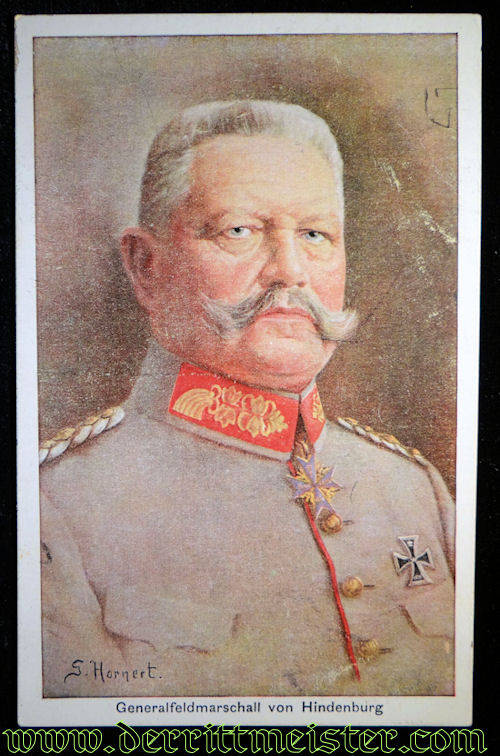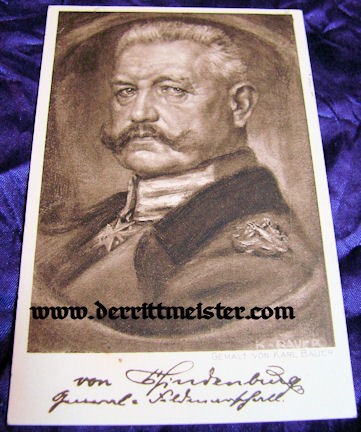Description
This is an excellent color postcard of Generalfeldmarschall Paul von Hindenburg (1847-1934). Hindenburg had a long and distinguished military career. He served in both the 1866 Austro-Prussian War and the 1870-1871Franco-Prussian War. In 1911, he retired while serving as a General der Infanterie in command of the 4. Armeekorps. As was the tradition upon retirement, he was promoted to generaloberst. With WW I’s outbreak, he was called back to service and appointed the 8. Armee’s commander. Under his leadership on the Eastern Front, the Germans dealt the Russians a major defeat at the Battle of Tannenberg. His continued success on the Eastern Front led to his promotion to Generalfeldmarschall in November 1914.
In 1916, von Hindenburg left his post in the East and assumed the German Army’s overall control as Chief of the General Staff. He was supported by his deputy, Eric Ludendorff, throughout this time period. After WW I ended, he retired for the second time in 1919. From 1925 into 1934, he served as the Weimar Republic’s President. A total of seven men served him as Chancellor during the period, with Adolf Hitler as the seventh, and most-notorious. [Upon von Hindenburg’s death, Hitler assumed overall control of Germany, not as President, but as Chancellor and Führer].
This color postcard is based on a painting of von Hindenburg. He appears in a feldgrau tunic, complete with the 1914 Iron Cross 1st Class on his left breast and the Orden Pour le Mérite at his neck. On the postcard’s reverse is the notation that it was produced for the benefit of a veteran’s organization. It was not mailed.




